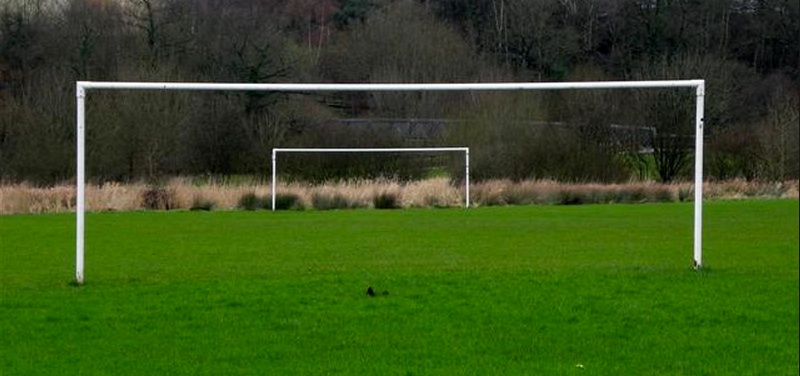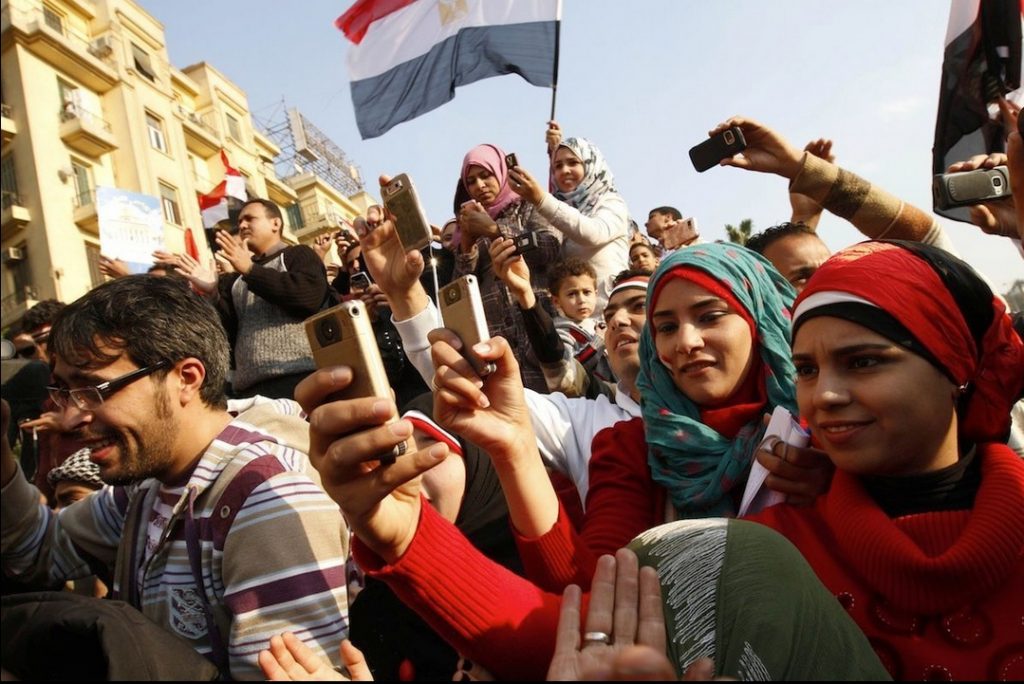Chapter 13: Ensuring quality teaching in a digital age
13.8 Step six: set appropriate learning goals

Image: © www.geograph.ie
13.8.1 Setting goals for learning in a digital age
In many school systems, curriculum and learning goals are already pre-determined by national, state or provincial curriculum committees and/or ministries of education. In many trades and vocational areas, industry training boards or employers’ associations set learning goals or desired outcomes or competencies that need to be followed for qualifications to be accredited. Even in a university, an instructor (particularly a contract instructor or adjunct) may ‘inherit’ a course where the goals are already set, either by a previous instructor or by the academic department.
Nevertheless, there remain many contexts where teachers and instructors have a degree of control over the goals of a particular course or program. In particular, a new course or program – such as an online masters program aimed at working professionals – offers an opportunity to reconsider desired learning outcomes and goals. Especially where curriculum is framed mainly in terms of content to be covered rather than by skills to be developed, there may still be room for manoeuvre in setting learning goals that would also include, for instance, intellectual skills development. In other contexts, the development or focus may be on more affective skills, such as sympathy or empathy, or on the development of manual or operational skills.
13.8.2 Learning goals for a digital age
In Chapter 1, Section 2, I listed a number of skills that learners will need in a digital age, including:
- modern communication skills;
- independent learning;
- ethics and responsibility;
- teamwork and flexibility;
- thinking skills including:
- critical thinking;
- problem solving;
- creative thinking;
- strategising and planning;
- digital skills;
- knowledge management.
These are examples of the kinds of goal that need to be identified. More traditional goals might also be included, such as comprehension and application of specific areas of content. These goals or outcomes might be expressed in terms of Bloom’s taxonomy (1956) or the Royal Bank of Canada’s (2018) or in a variety of other ways. All these skills need to be embedded or built within the needs of a specific subject domain. In other words, they are skills that need to be specific to a subject area rather than general. At the same time, students who develop such skills within any particular subject area will be better prepared for a digital age.
Your list of goals for a course may – indeed, should be – different from mine, but it will be essential to do the kind of analysis recommended in Step 1 (deciding how you want to teach), and then to decide on what the learning goals should be, based on:
- your understanding of the needs of the students;
- the needs of the the subject domain;
- the demands of the external world.
I have placed a particular emphasis on the development of intellectual skills. As with all learning goals, the teaching needs to be designed in such a way that students have opportunities to learn and practice such skills, and in particular, such skills need to be evaluated as part of the formal assessment process. Perhaps more challenging is to identify what you will be adding to general skills development such as critical thinking. What is the level of critical thinking skills that students will come with, and how do I make sure they progress in their ability in this skill during the course? This emphasises the value of having learning outcomes clearly identified for a whole program, perhaps using a curriculum mapping tool such as Daedalus.
What this means in terms of course design is using the Internet increasingly as a major resource for learning, giving students more responsibility for finding and evaluating information themselves, and instructors providing criteria and guidelines for finding, evaluating, analysing and applying information within a specific knowledge domain. This will require a critical approach to online searches, online data, news or knowledge generation in specific knowledge domains – in other words the development of critical thinking about the Internet and modern media – both their potential and limitations within a specific subject domain.
13.8.3 Bring in the outside world
One great characteristic of modern media is the opportunity to bring in the world to your teaching in many ways, for instance:
- by directing students to online sites, and encouraging them to identify and share relevant sites;
- students themselves can collect data or provide real world examples of concepts or issues covered in the course, through the use of cameras in mobile phones, or audio interviews of local experts, or identifying relevant open educational resources;
- setting up a course wiki that both you and the students contribute to, and make it open to other professors and students to contribute to, depending on the topic;
- if you are teaching professional masters or diploma programs, or MOOCs, the students themselves will have very relevant world experiences that can be drawn into the program. This is a great way to enable students to evaluate and apply knowledge within their subject domain.
There are many other possible goals that are either impossible to meet without using the Internet, or would be very difficult to do in a purely classroom environment. The art of the instructor is to decide which are relevant, and which in particular could be key learning goals for the course.

13.8.4 Learning goals: the same or different, depending on mode of delivery?
In many cases, it will be appropriate (indeed, essential) to keep the same teaching goals for an online course as in a similar face-to-face course. Many dual-mode institutions, campus-based institutions who also offer credit courses online, such as the University of British Columbia, Penn State, University of Nebraska, offer the same courses both face-to-face and online, particularly in the fourth year of an undergraduate program. Usually the transcript of the exam grade makes no distinction as to whether the course was done online or face-to-face, since the students take the same end of course exam, and the actual content covered is usually identical in each version.
Nevertheless, there may be occasions where some goals in the campus-based class may need to be sacrificed for different but equally valuable goals that can be achieved better online. It is also important to remember that although it may be possible to achieve the same goals online as in class, the design of the teaching will likely have to be different in the online environment. Thus often the goals remain the same, but the method changes. This will be discussed further in Steps 7 and 8. The important point is to be aware that some things can be more easily done in a campus environment, and others better done online, then to build your teaching around these somewhat different goals. Using a blended approach may enable you to widen the range of goals, but be careful not to overload students by doing this.
13.8.5 Assessment is the key
It is pointless to introduce new learning goals or outcomes then not assess how well students have achieved those goals. Assessment drives student behaviour. If they are not to be assessed on the skills outlined above, they won’t make the effort to develop them. The main challenge may not be in setting appropriate goals for online learning, but ensuring that you have the tools and means to assess whether students have achieved those goals.
And even more importantly, it is necessary to communicate very clearly to students these new learning goals and how they will be assessed. This may come as a shock to many students who are used to being fed content then tested on their memory of it.
13.8.6 Conclusion
In some ways, with the Internet (as with other media), the medium is the message. Knowledge is not completely neutral. What we know and how we know it are affected by the medium through which we acquire knowledge. Each medium brings another way of knowing. We can either fight the medium, and try to force old content into new bottles, or we can shape the content to the form of the medium. Because the Internet is such a large force in our lives, we need to be sure that we are making the most of its potential in our teaching, even if that means changing somewhat what and how we teach. If we do that, our students are much more likely to be better prepared for a digital age.
Reference
Bloom, B. S.; Engelhart, M. D.; Furst, E. J.; Hill, W. H.; Krathwohl, D. R. (1956). Taxonomy of educational objectives: The classification of educational goals. Handbook I: Cognitive domain. New York: David McKay Company
Royal Bank of Canada (2018) Humans Wanted Toronto ON: Royal Bank of Canada
Activity 13.8 Setting learning goals
1. Take a course you are teaching in class at the moment. Write down the learning goals. Given the need for developing the skills needed in a digital age, would you want to change the goals of this course? If so, would you have to change your teaching methods and/or use of technology?
2. If you could design this course from scratch, would the learning goals change or just the teaching methodology?
3. If you were to introduce some of the skills for a digital age listed in Chapter 1, Section 2, what activities would need to be built into the course to enable students to develop such skills? How would you assess these skills?
Again there is no feedback on this activity; other chapters in the book contain some guidelines or answers.

